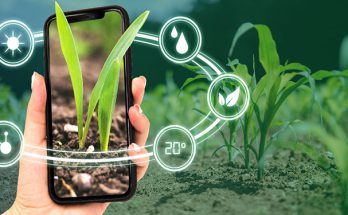 Aid for Trade (AfT) is one of programmes guiding foreign aid for developing countries. AfT programme has helped in the establishment of supply-side and trade-related infrastructure in developing countries to enhance their trade performance. Since 2010, this funding has helped in developing export infrastructure in some African countries, including Egypt, Ethiopia, Kenya, Morocco and Tanzania with around 35 per cent of total AfT disbursements.
Aid for Trade (AfT) is one of programmes guiding foreign aid for developing countries. AfT programme has helped in the establishment of supply-side and trade-related infrastructure in developing countries to enhance their trade performance. Since 2010, this funding has helped in developing export infrastructure in some African countries, including Egypt, Ethiopia, Kenya, Morocco and Tanzania with around 35 per cent of total AfT disbursements.
The World Bank, the European Union, and the African Development Bank are the largest providers of AfT to Africa. At a bilateral level, Germany, Japan, the United States, and France are the leading funders. Some new partners have emerged, including Kuwait, the United Arab Emirates, the Climate Investment Funds, and the OPEC Fund for International Development.
Sustainable Development Goal 8(a) emphasises the need to increase aid for trade support for developing countries through the Enhanced Integrated Framework for Trade-Related Technical Assistance to Least Developed Countries.
Work programme of AfT in February 2016 under theme of promoting connectivity emphasised on helping poor countries access markets and be able to exploit their potential through trade. The focus of the programme was on upgrading infrastructure for export growth.
Trade in Rwanda
Based on competitive index, Rwanda is one of most competitive country in East Africa and third most competitive country in sub-Saharan Africa. It is also one of fastest-growing economy in the region and globally.
Over past years, Rwanda’s participation in global or regional trade has been low. As a rapidly growing economy, Rwanda imports more than it exports, leading to a high trade deficit. Between 2008 and 2012 export growth averaged 26 per cent compared with growth in imports of 18 per cent. In May 2017 trade deficit of Rwanda was $128.95 million. For sustainable economic development, Rwanda strives to achieve high export growth. The government has been making strong efforts to help improve the export sector and move toward the attainment of Vision 2020 target of 28 per cent export growth. The have been programmes geared at developing the sector, as well as building the capacity building of exporters and enhancing competitiveness of Rwandan products promoted by government. Presently, Rwanda’s exports consist of mainly traditional products, such as coffee, tea and minerals like tin, coltan, wolfram and cassiterite. The country main exports markets are China, Germany and United States. Rwanda imports mainly food prod
ucts, machinery and equipment, construction materials, petroleum products and fertilisers. Main imports partners are Kenya, Germany, Uganda and Belgium.
For the country to improve its trade balance there is need to boost exports, on one hand, and achieving self-sufficiency, on the other hand, using home grown initiatives the country has developed to achieve self-reliance. Export promotion needs to be done strategically to achieve competitive advantage at regional and international levels.
Government has been trying to address challenges faced by the export sector by support firms to improve their production capacity, productivity, as well as promoting product diversification, skills development, science and technology and intellectual property development. Infrastructure development is also critical to overcome challenges of a landlocked country like Rwanda.
Over past years, foreign aid in form of official development assistance has been major source of developing export infrastructure of the country. Although Rwanda has been effectively using aid for development, the country remains vulnerable to fluctuations in aid flows.
AfT in Rwanda
Rwanda has been substantially benefitted from official development aid. Since 1990 flows through AfT have increased substantially, with about 25 to 30 per cent of the aid used to develop trade infrastructure to solve supply side constraints. Largest donors for infrastructure development included World Bank, the US, EU, UN, AfDB, and Belgium. Development partners mainly concentrated in developing energy and transport infrastructure. To monitor performance of AfT, Rwanda recently put in place a system of result-based management to evaluate benefits from AfT and to promote accountability through various levels of government.
Recommendations
Rwanda has been using aid through AfT programme to develop the necessary infrastructure to help unleash the huge potential of the exports sector. However, there is need to identify key areas and develop them to achieve competitive advantage. Foreign aid should be further used to boost exports through diversification and value-addition in manufacturing and service sector. Government should also undertake more work on strengthening the productive capacity of the country and its trade-related infrastructure. There is also need to focus on the demand side of exports by securing more favourable market access for the country’s products and addressing non-tariff obstacles.



